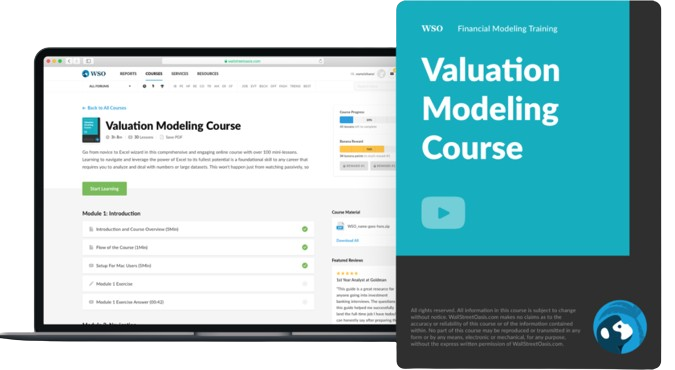Default Risk Premium
An extra amount of interest that a borrower pays to a lender or investor
What is a Default Risk Premium?
The default risk premium is an extra amount of interest that a borrower pays to a lender or investor in exchange for a higher credit risk associated with the borrower if he fails to repay the principal amount at some point in the future.
It can be expressed mathematically as the difference between the interest rates that must be paid on bonds (Or any debt) and an interest rate that does not include any risk (Risk-free).
Governments are often the sole borrowers who do not pay a default risk charge. But in turbulent times, even the U.S. Treasury bonds have had to borrow at higher yields.
Additionally, corporations that issue junk or non-investment grade bonds and people with bad credit must pay default premiums.
Important rating organizations, including S&P (Standard and Poor) and Fitch, grade corporate bonds.
The issuers' ability to produce income to cover principal and interest payments and any assets they can pledge to secure the bond is considered when assigning these ratings.
The default premium for a corporation decreases with a higher credit rating. Investors won't get as much of a yield on issuances with better ratings.
Thus, investors with bad credit histories are charged higher interest rates when borrowing money. Investors will avoid investing in default-prone enterprises if an appropriate DRP is not provided.
A company's future cost of borrowing capital will be reduced if it exhibits lesser default risk since such firms will receive funding at lower DRP.
Formula and Example of Default Risk Premium
The default risk premium or DRP separates the risk-free and the lender's interest rates. The interest rate comprises the following elements: risk-free rate, liquidity premium, maturity premium, and inflation.
DRP = Interest Rate Charged by Lender – Risk-Free Rate of Interest
A risk-free return rate must be subtracted from the bond's coupon rate to determine the DRP. It may be understood by using the steps below.
1. Determine the rate of return on a risk-free investment.
The US government backs the security, and the principal amount will increase with inflation while preventing deflation. Let's say that the risk-free security rate is 2.5%.
2. Subtract the treasury's rate of return from the bond’s rate of return.
This will result in a return of 7.5 percent if the corporate bond we want to buy provides a 10 percent annual rate of return (10% - 2.5% = 7.5%)
3. Deduct the inflation rate from the aforementioned discrepancy.
Let us consider the inflation rate is 3%
The value will be 7.5 percent - 3 percent = 4.5%
4. Subtract any additional premiums from the bond-like liquidity premiums if there are any.
By illustration, if the bond has a liquidity premium of 1 percent, reducing 1 percent from 4.5 percent will result in a default risk premium of 3.5 percent.
Example:
Conta Inst. is selling bonds with an 11 percent yield on an annual basis. Now imagine that the risk-free rate is 1%. The liquidity and maturity premiums of the bonds are both 1 percent, and inflation is anticipated to be about 2 percent.
DRP = 11% - (1+1+1+2) = 11% - 5% = 6%
What are the Factors That Determine the Default risk premium?
Creditworthiness is based on several variables, like the ones listed below:
1. History of Credit
Lenders will have more confidence in a person or business if they have consistently paid interest payments on time for previous obligations.
Creditors will think the organization is more reliable if it has accrued incremental debt obligations or growing sums of debt each time debt was taken on and has been able to make interest payments on time.
A strong credit history encourages lenders to give borrowers more credit at favorable terms. The default risk premium paid will be modest due to the entity's comparatively low default likelihood.
The inverse is also accurate. Lenders will request a higher premium if a borrower has a bad credit history.
2. Asset Stewardship
Because loans may be secured against assets, borrowers with assets become more appealing to banks.
A bank could use the property as collateral if, for instance, a company owns a million-dollar building and wants to take out a $1 million loan to support its operations.
In such a scenario, the bank would be entitled to claim ownership of the property if the company could not make the loan payments.
Mortgage agreements frequently depend on collateralization. If the borrower does not repay the loan, the bank may seize the property. Larger loans may often be obtained by borrowers with many collateralizable assets, albeit this may not directly impact the DRP.
3. Profitability and Liquidity
Before making a loan, banks can determine a company's creditworthiness based on its profitability.
For instance, if a company requests a loan from a bank, the bank may review some of the most recent financial accounts of the company.
Banks are more likely to assess a reduced default risk premium if the company consistently generates consistent month-over-month income, successfully controls expenses, and turns a profit.
The company's balance sheet and cash flow statement might give you information about its liquidity and ability to make monthly interest payments. However, low profitability and liquidity will command a greater default risk premium.
3. Credit Worthiness
DRP is higher for businesses with subpar credit ratings and lower-grade bonds.
Default Intensity Estimates and Bond Ratings
Assuming no previous defaults, the chance of default each year is known as the default intensity (also known as the hazard rate).
A bond rating is a technique to gauge a bond's creditworthiness, which translates to the issuer's borrowing costs. Bonds are often given a letter grade in these ratings indicating their creditworthiness.
Bonds classified as investment grade have ratings of "AAA" to "BBB-" from Standard & Poors and "Aaa" to "Baa3" from Moody's. Bond yields on investment-grade bonds often rise when ratings drop. The most widely used AAA-rated bond instruments are U.S. Treasury bonds.
Standard and Poor's (S&P) ratings for non-investment grade (junk) bonds range from "BB+" to "D" (or "Baa1" to "C" for Moody's).
These kinds of bonds can receive the rating "not rated." Even though bonds with these ratings are considered higher-risk investments, some investors are lured to them because of their large returns.
Some junk bonds are burdened with liquidity problems and may default, leaving investors with nothing. Southwestern Energy Company's bond, Standard & Poor's rated "BB+" due to its unfavorable outlook, is a perfect example of a non-investment grade bond.
Default Risk Premium FAQs
DRP is the difference between the interest rate on debt and the risk-free rate. Investors are given compensation for the possibility of a default by a company through the default risk premium.
DPR is calculated by deducting the risk-free rate of return, inflation rate, liquidity, and maturity premiums from the interest rate charged on a bond or debt.
DRP = Total Interest Charged – Other Component Of Interest
DPR, liquidity premium, maturity premium, projected inflation, and the risk-free rate.
Credit history, Credit worthiness, asset stewardship, profitability, and liquidity.




or Want to Sign up with your social account?